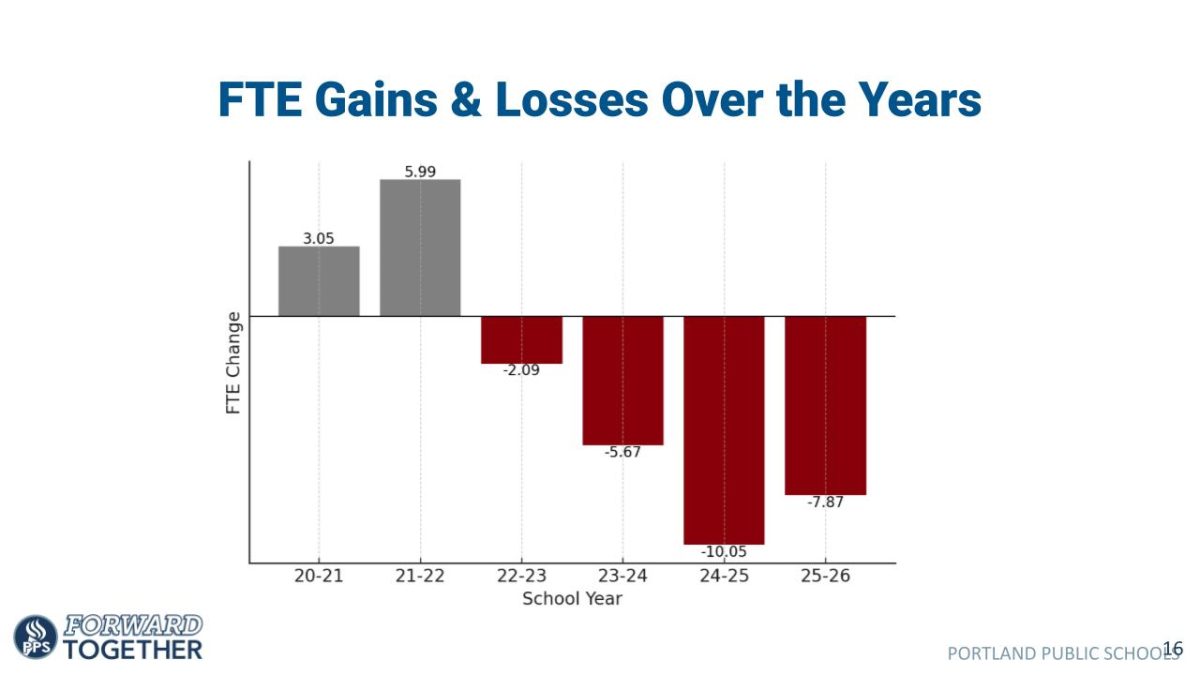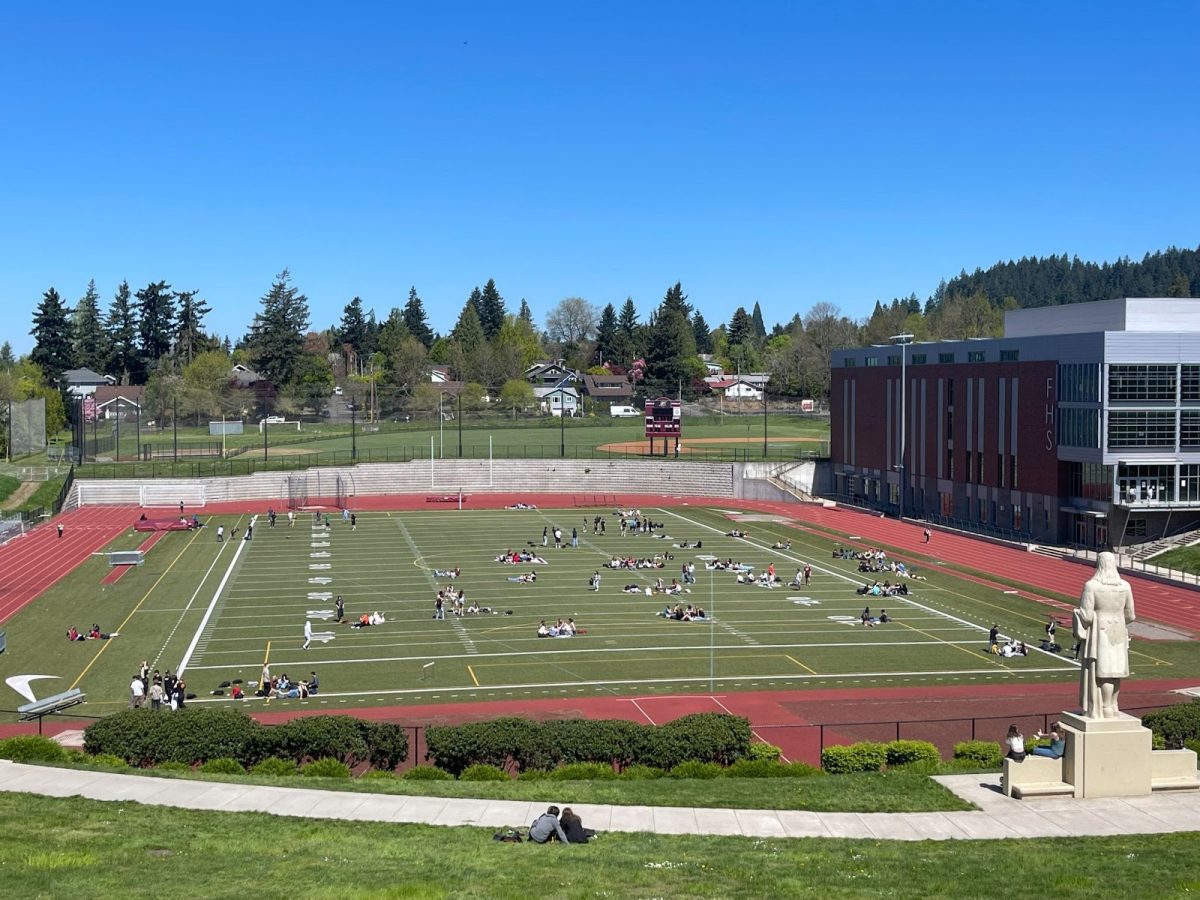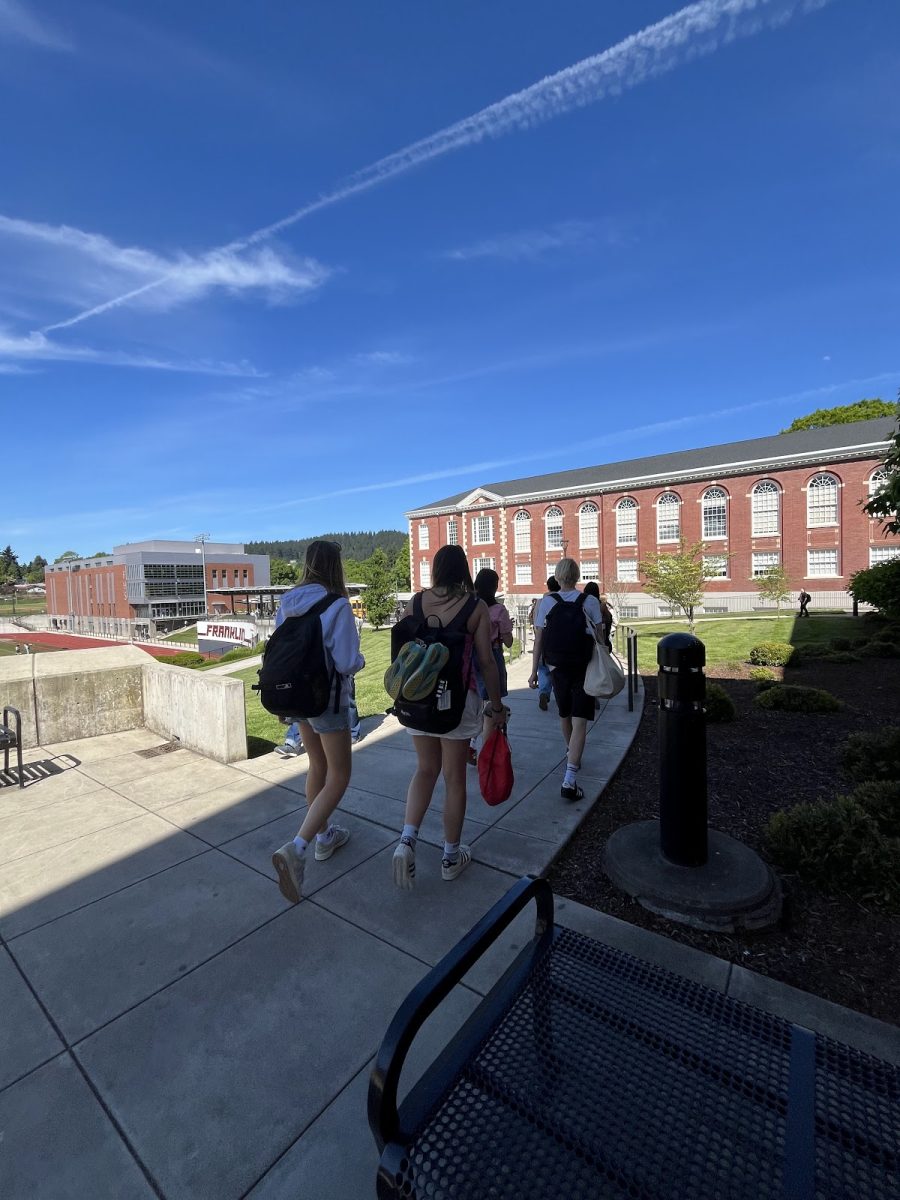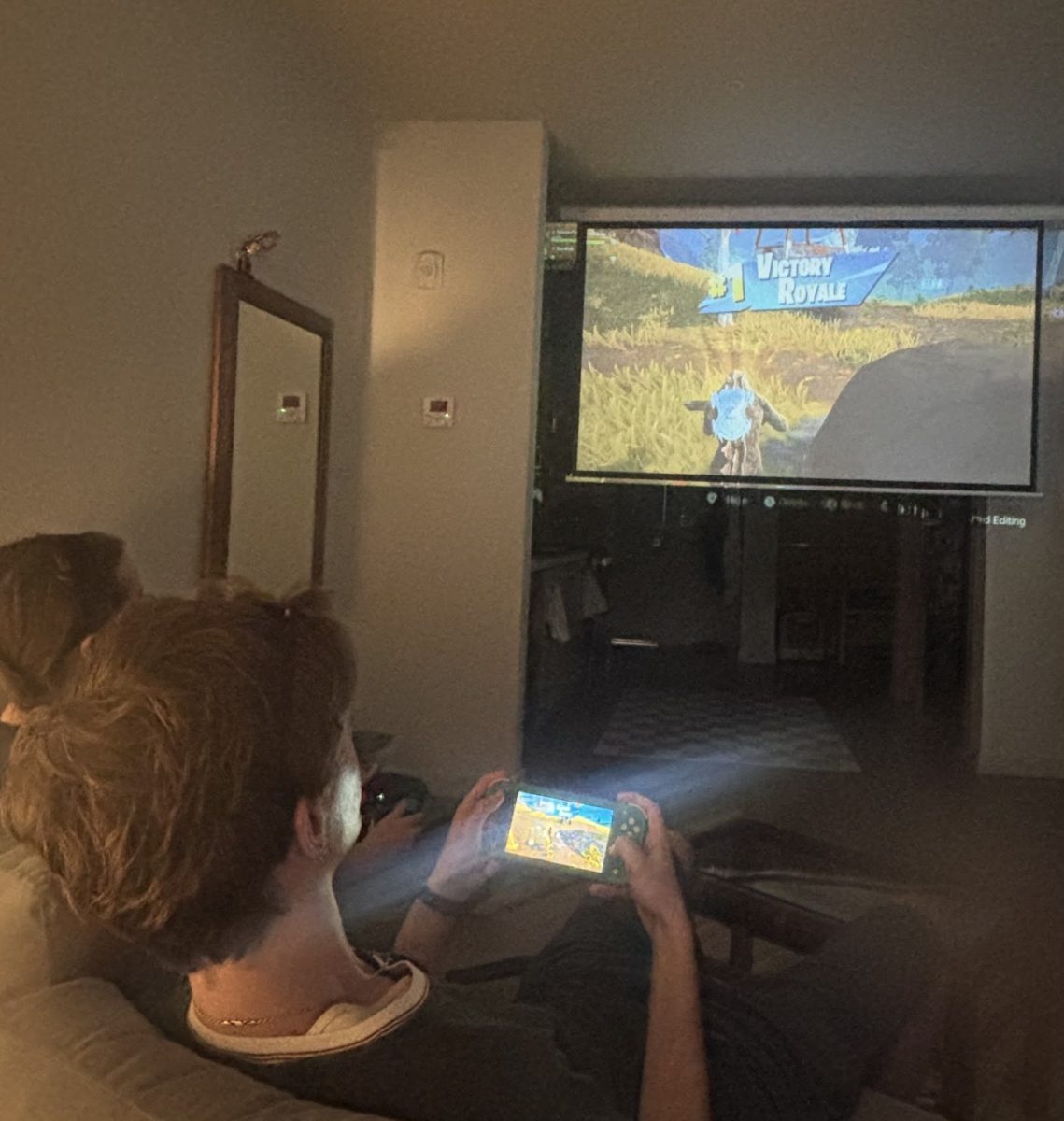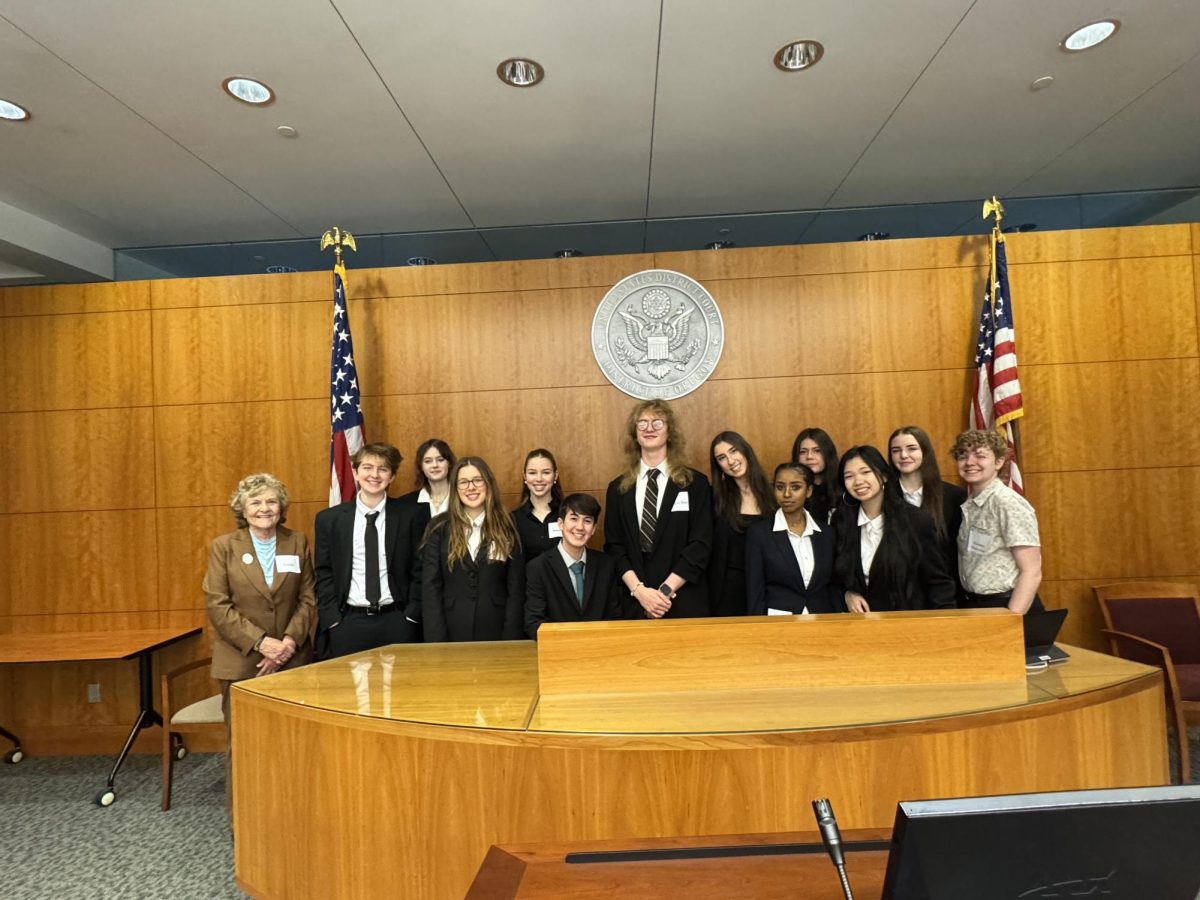
Following a projected drop in enrollment, Portland Public Schools (PPS) has outlined a budget plan to cut roughly 107 teachers from district elementary and middle schools, causing backlash across the PPS community. Since the declaration to cut “student-facing positions” was made in mid-February, the district and educators have each made their case for how to spend the district’s approximate $700 million for the 2022-2023 school year.
The PPS “General Fund” operates as the primary fund used for day-to-day operations, covering staff, transportation, materials, supplies and utilities. The fund is composed mostly from local revenue and money from the statewide school fund grant. How much of this money PPS receives is reliant on enrollment in PPS schools in relation to other districts around the state.
As a result of the COVID-19 pandemic, PPS projected an 8 percent decrease in overall enrollment for the 22-23 year. These findings clash with estimates made by the Oregon Department of Education (ODE) in Feb. 2022, which suggest that weighted enrollment (a composite in which special needs or at risk students are counted as more than one student) will only decrease by 1.65%. Despite projections of fewer students in the district, total funding is expected to increase.
Portland isn’t the only place where many families are finding alternatives to public schools; it’s a statewide trend. Because there’s a predetermined education allotment from the state, and enrollment is down across the state, funding per student is on the rise. According to ODE estimates, PPS will receive $9,376 per weighted student in the 2022-23 school year, up from $9,032 this year. This will make for a total of $507.6 million, over $2 million more than in the 2021-22 year. In combination with the additional state funding, the district is expected to have $26 million in the 22-23 general fund more than in the 21-22 year. Regardless of the increase, the district insists that it is not nearly enough to maintain teachers.
Portland Public Schools projected that their general fund expenses will rise by $44 million going into the following school year. The increase is mostly staffing costs, up $26 million, and transportation costs, up $13 million. At a February PPS Board meeting, the district shared a projection in which, at the current rate of spending and staffing, PPS would be facing a large budget deficit by 2024.
Declining enrollment in combination with a looming budgetary crisis has led the district to call for a staffing reconfiguration, eliminating 107 ‘school-based staff,’ 83 of which are classroom teaching positions. 61 educators will be cut from K-5 homerooms, 31 from middle schools, and 4 from overall physical education. High schools will gain 7 teachers, and overall arts education will gain 5. “If we don’t have the money to pay for [staff], the cuts are going to have to come from somewhere,” says PPS Board Member Eilidh Lowery.
The Portland Association of Teachers (PAT) argues that cutting staff is unnecessary according to budgetary models PPS has shared. In addition to state funding, PPS has a large sum of federal money which the PAT believes can be used to prevent cutting staff. “Right now, we are not facing a budget deficit. We don’t have to make any cuts at all. So it is incredibly disconnected from the way we talk about schools when we are jumping to make cuts to student services, when we don’t even have a budget cut to necessitate it,” says PAT president Elizabeth Thiel.
Already exhausted educators worry that cutting staff will lead to large class sizes. “I’ve been a teacher for 18 years and there is nothing that matters more to a teacher’s ability to reach their students than having small class sizes,” says Thiel. “The more you know your students and the fewer [students] you have, the better your ability to actually tailor learning to meet the individual needs of those human beings.”
PPS refutes the claims that staffing cuts will lead to a drastic increase in class sizes, citing projections that show, “Nearly 98 percent of all classrooms are staffed below the maximum class size thresholds.” This data, based off of PPS enrollment data rather than that of the Oregon Department of Education, shows that the average size of K-3 classes will be 22 students. Title 1 (Schools in which children from low-income families make up at least 40 percent of enrollment) and CSI (Comprehensive Support and Improvement) Schools boast average K-3 class sizes of 20 or fewer students.
At the center of the debate over where or where not to allocate funds are Portland’s historically underserved students of color. Testing conducted in fall of 2021 and published in the Oregonian showed that black fourth-graders were a year behind in reading and two and a half years behind on math. When it comes to closing this achievement gap, PPS Board Member Eilidh Lowery doesn’t believe class size is the answer. “The data around that … shows that smaller class sizes aren’t actually effective at increasing student learning until you’re talking about classes of about 15 kids,” says Lowery. “If our focus is on student outcomes, cutting a class size by three kids is not going to make a difference.” Lowery believes that targeted interventions like summer school, reading specialists, extra mental health workers and tutors, better serve students that are underserved: “We are making choices about investing in our black and native students. And that means we will be cutting classroom teachers.”
For Thiel, class sizes have been imperative to closing the achievement gap. “It’s been hard to create safe environments for kids at school, let alone you know, that high quality learning environment that every student deserves to have, and smaller class sizes is one of the most important ways to create a safe and supportive learning environment,” she says.
Teachers aren’t the only ones voicing their displeasure towards the district’s decision around staffing. Five members of Oregon’s legislature and the BIPOC caucus sent a letter to district leadership sharing “frustration” that “budget cuts were all aimed at direct student contact positions.”
The dispute has deepened the divide between teachers and the district. Recent board meetings have been a show of passionate testimony from teachers opposing the decision. Lowery comments on the frustration, saying, “ I mean, I think this is the hardest moment of my time on the board. Everyone is exhausted and they’re massive decisions to be made and they’re massively unpopular. And so it’s how do we do the right thing for students in this really critical moment?”
Staffing allocations are the first step in a lengthy process to finalize a district-wide budget. In “phase two,” Superintendent Guadalupe Guerrero will propose a finalized budget, to be approved by the board in June.



